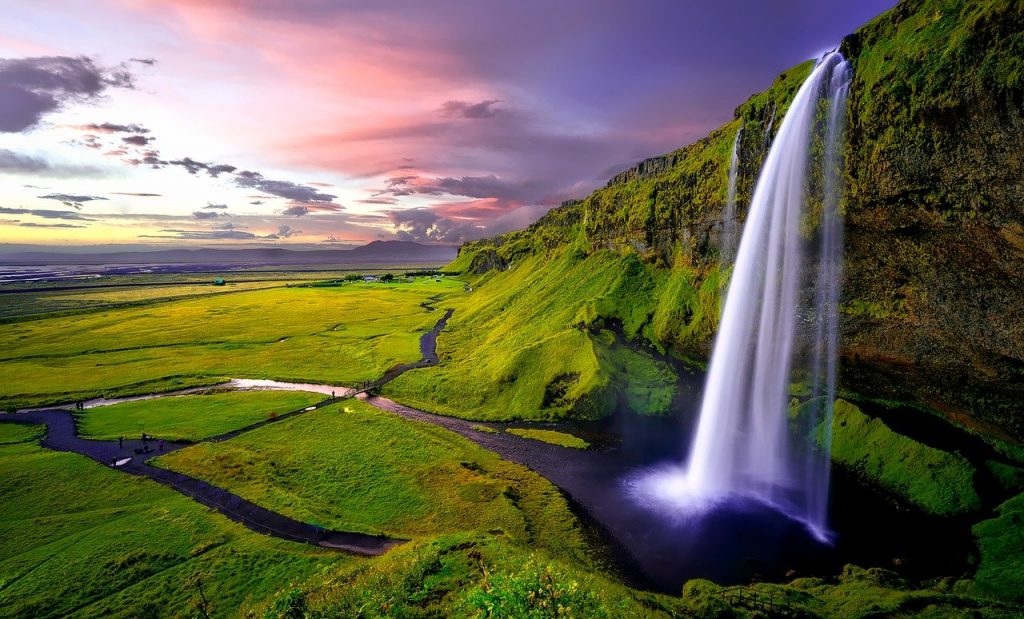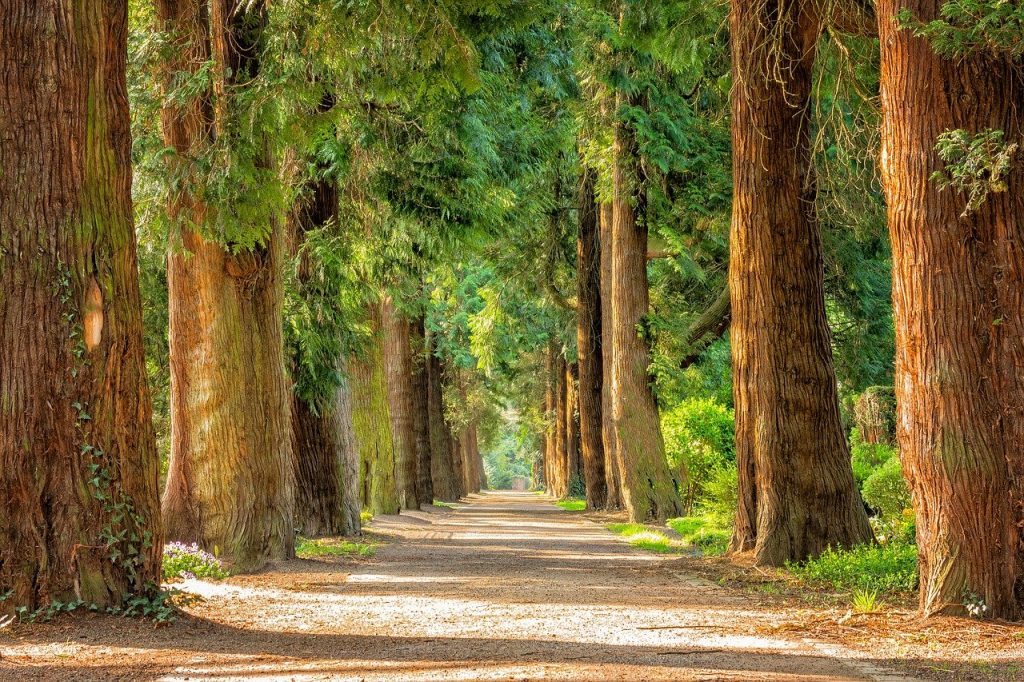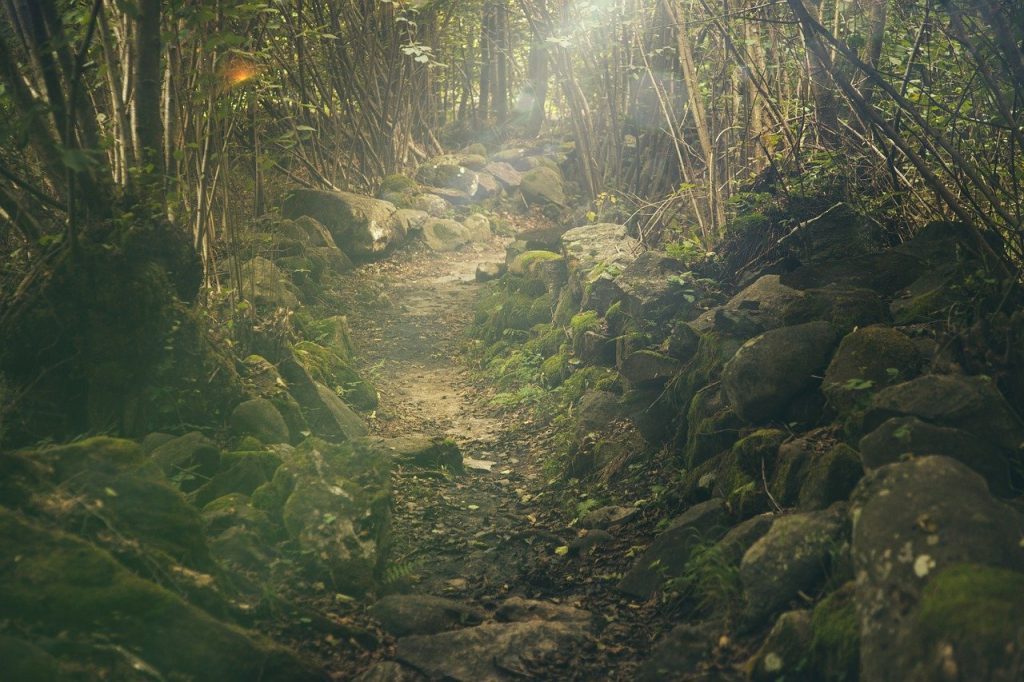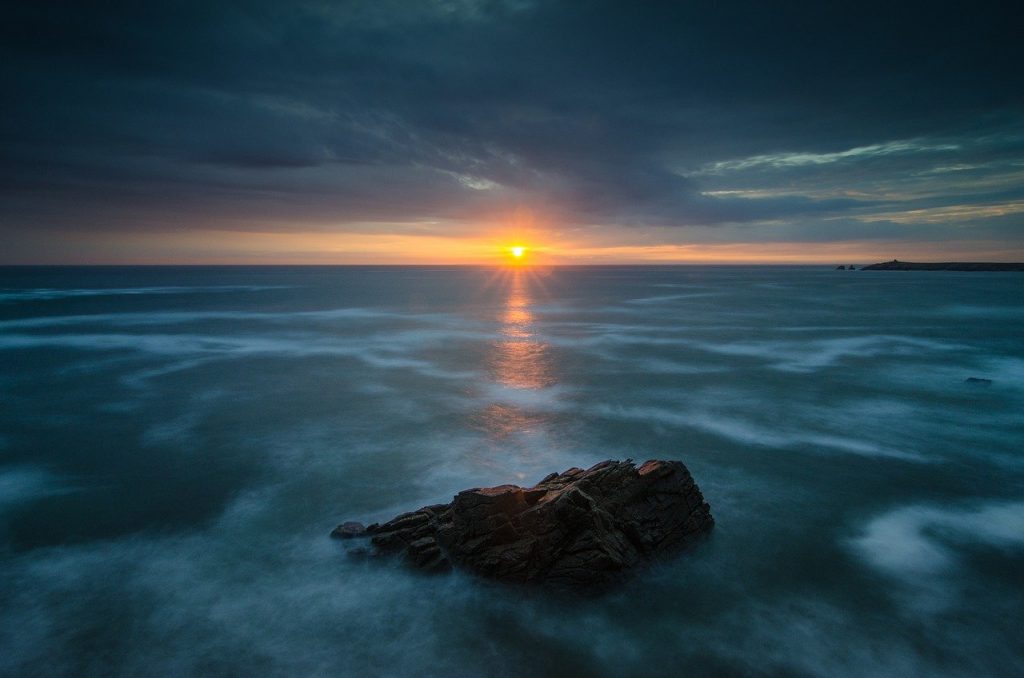Landscape photography is a popular genre, and many amateur photographers begin their careers in this field. However, there is a lot more to it than simply going somewhere beautiful, holding your camera up to your face, and pressing the shutter button.
Have you ever gone out and taken some landscape photos only to discover that they didn’t turn out so well when you got home? Do you get lost when you go out and don’t know what to photograph or how to photograph it? Here are ten pointers to help you improve your landscape photography.
Work the scene

One thing you’ll notice a lot of new photographers do is walk up to a scene, take one photo, and then call it a day. A more experienced photographer, on the other hand, will take many more photos and spend time walking around the scene to see what they can capture.
Consider different angles and different heights. You can take so many photos with digital and it won’t cost you anything other than a few minutes. So take advantage of the situation and see what else you can get.
Leading lines and patterns

Find a leading line that will draw your viewer into the image, which is something we all learn from the beginning. Fences, roads, or anything resembling a line that begins at the edge of the frame and leads people into your image. It is an invitation to examine the photograph.
Patterns can be an excellent way to draw attention. If you notice a pattern and photograph it, there is a good chance that your audience will find it interesting as well. Patterns can be found anywhere, including the ground, the bark of trees, and how they are planted. They can be quite captivating.
Time of day

We all learn at some point in our lives that the time of day is important. It is also affected by the time of year. In winter, you can shoot all day in Southern Australia. The sun is never high in the sky, the shadows are soft, and it is an excellent time of year for photography. Summer, on the other hand, is dreadful. It’s hot, the light is harsh, the shadows are harsh, and the colors in your images can often appear bleached.
Consider where you are and what time of day is best for you to take photos. Some people prefer the early morning because there are fewer people around and you can get what you need before the day begins. Others prefer later in the day and aren’t afraid to share their location.
Some of the locations you want to photograph will be better suited for the sunrise because you may not be able to capture a sunset there. It could also be the other way around. Many coastal areas on Australia’s east coast make it nearly impossible to see a sunset, so get up early and aim for sunrise instead.
Take a look at your foreground

The foreground is frequently overlooked when photographing landscapes, but what is right in front of you is sometimes exactly what you need to make your image stronger.
Some landscape images can be made more interesting by including a small plant or something in the foreground, close to the camera. It can also serve as a point of departure for the scene at the bottom of the image.
Take a look at what other photographers are doing

Without a doubt, one of the most beneficial things you can do is observe other photographers and take notes on what they do. Don’t underestimate how much you can learn from looking at other people’s work. You can see the good and the bad in both good and bad people, not just good or professional people.
Examine work that you like and consider why you like it, as well as what you believe makes it work. Can you pinpoint what about that image makes you envious that you didn’t take it?
Make a note of any images that you don’t think are particularly good. Analyze them and see what you discover isn’t working. Learn from their mistakes and avoid making the same ones.
Think about the seasons

It’s all too easy to go out one day and take photos of a particular location, only to forget about it the next, but what about other times of the year? Some places will appear to be more attractive in the summer than in the winter. Spring may bring a plethora of flowers, while autumn brings vibrant foliage.
Photographing the same location throughout the year can give your images a different feel each time you visit.
It’s also a good idea to consider where you want to take photos, and then what season will be the best for displaying them. In the summer, the mountains may appear sparse and uninspiring, but in the winter, they are blanketed in snow, which adds a new dimension.
Seek out the smaller scenery

When you’re out and about, it’s simple to put on a wide-angle lens and use it for all of your photos. The majority of landscapes are wide vistas that show the scene in front of you. There are, however, other ways to demonstrate what is present. Look around for foreground objects or flora that you can use. This is especially useful if the subject is far away. It has the potential to add something interesting to the foreground of your image.
Consider bringing a zoom or macro lens. It’s possible that you’ll be able to photograph something similar to the flora. Instead of focusing solely on the flowers that may be growing on it, consider the entire plant and its location. It would be helpful if you could give it some context about its surroundings. This can help you tell a whole other story at times.
What kind of gear do you need?

Landscape photography does not require any special equipment; simply a camera with a good lens will suffice. It is entirely up to you whether you use a compact camera or a DSLR.
If you’re shooting with a DSLR, you’ll probably want a wide-angle lens or something a little longer. Landscape photographers prefer wide-angle lenses, though many also use lenses with focal lengths of up to 200mm. You don’t need the best camera available, and it’s often the lens choice that yields the best results.
It’s a good idea to have a sturdy tripod on hand. The best advice is to get the best you can afford; don’t skimp on price because you’ll be sorry later. A remote shutter release is also a useful piece of equipment to have, or you can use your camera’s self-timer.
The equipment list tends to grow as you progress and become more skilled at landscapes. You’ll find yourself wishing for things like long-exposure filters or better lenses. The list could go on and on.
Tripod: when to use or not

Some people believe that if you are a serious landscape photographer, you will always use a tripod. If you aren’t, you can’t be serious about your craft.
That’s one way to look at it. However, many new and experienced photographers find it to be limiting or stifling their creative flow; that you can’t move around easily when taking photos.
The short answer is that you should feel comfortable when photographing, so there is nothing wrong with not using a tripod. You must also accept that you may not always get the sharpest images – it’s a trade-off.
A tripod is essential when shooting at night, especially if you don’t want noisy images. With a tripod, you can use your camera’s best settings to obtain the highest quality image.
Look for the story
There is no denying that some places you visit will seem boring, and you will wonder why you went there in the first place. It’s one of those situations where you’ll want to think about other options, but one that can really help in learning about the history of the area.
Consider where you’ve come from and why you went there. Is there any evidence of history that you can see? How can you include that in the image to tell the story?
In many parts of Victoria, Australia, you can go to a town and find very little. There may only be grain silos and fields of crops in various stages of development. Examine the silos up close and see if you can capture a photo of how long they have been standing there. Examine how they are used. There will always be railway tracks nearby, so shoot how they lead to the silos (see tip #1 above). Perhaps a distant shot of the silos standing tall in a flat country. The story becomes entirely focused on the silos and the surrounding countryside.
Landscape photography is fantastic, and the possibilities are limitless. Consider all of the suggestions here, and you should be able to produce your best landscape photography.
Please share any additional landscape photography tips you have, as well as your images, in the comments section below. If you use any of the suggestions, please let me know how they worked out for you.
Note: If you want to make some adjustments to the photo just let me know. I can do it for you at a very low cost. You can hire me to edit your photo.
LATEST POST
- What is Midjourney
 Discover the capabilities of Midjourney AI, learn how to effectively utilize the platform, and explore the advantages and disadvantages of the Midjourney AI image generator across its different pricing options.
Discover the capabilities of Midjourney AI, learn how to effectively utilize the platform, and explore the advantages and disadvantages of the Midjourney AI image generator across its different pricing options. - Brand identity elements
 In the vast marketing universe, imagery is pivotal in establishing and nurturing a brand’s identity. A brand’s visual choices are not merely aesthetic decisions but strategic moves that can significantly influence perception and performance. This Picfixs article explores the intricacies of selecting imagery that complements and enhances a brand’s essence, ensuring it resonates with the… Read more: Brand identity elements
In the vast marketing universe, imagery is pivotal in establishing and nurturing a brand’s identity. A brand’s visual choices are not merely aesthetic decisions but strategic moves that can significantly influence perception and performance. This Picfixs article explores the intricacies of selecting imagery that complements and enhances a brand’s essence, ensuring it resonates with the… Read more: Brand identity elements - 100 Best Mountain Captions and Mountain Quotes for Instagram
 Ready to scale new social media heights? Look no further than this treasure trove of 100 exhilarating captions and quotes, handpicked for your Instagram mountain posts!
Ready to scale new social media heights? Look no further than this treasure trove of 100 exhilarating captions and quotes, handpicked for your Instagram mountain posts! - Symmetry in Photography: A Creative Approach with Examples
 Delve into the enchanting realm of symmetry in photography as we showcase mesmerizing examples on our website. Experience the allure of perfectly mirrored images!
Delve into the enchanting realm of symmetry in photography as we showcase mesmerizing examples on our website. Experience the allure of perfectly mirrored images! - 11 Quarantine Photoshoot Ideas to Try at Home for Amazing Photos
 Looking for unique photoshoot ideas during quarantine? Explore the 11 creative suggestions that will help you capture unforgettable moments at home.
Looking for unique photoshoot ideas during quarantine? Explore the 11 creative suggestions that will help you capture unforgettable moments at home.


